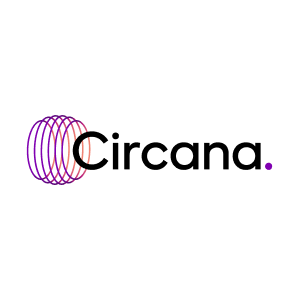- Circana

- Aug 12
- 8 min read
Updated: Sep 12
Table of Contents:
Today’s first-party and third-party customer data offer a level of granularity, precision, and accuracy that was simply not possible a few decades ago. The wealth of available data empowers businesses to create specific audience segments that can inform everything from product development to creating messaging that resonates. With this data, you can make sure you are saying the right things to the right people in the right places. This is more important than ever as the pressure to consistently drive ROI and ROAS continues to grow. Being able to not only drive growth but also have clear, communicable reasoning for your strategies and the actions that lead to growth is vital when supporting your marketing campaigns. Being able to defend strategies with data-backed insights is imperative when media budgets are often the first thing to get cut during uncertain times. Circana’s research has shown the long-term value in an always-on approach to marketing, especially during uncertain times when media is typically the first thing to get cut. This is why we recommend adopting strategies that make the most out of first-party and third-party data.
Of course, data sources are only as valuable as the insights that come from analyzing them. Even with substantial first-party sales data, many companies struggle to effectively organize or analyze that data to create reliable audience segments that can be activated through proven strategies. Without the right audience segments and strategies, you could be missing out on optimization opportunities that can drive efficiencies against your movable middle or help your brand grow with new audiences. Audience targeting has evolved, and partnering with the right data partner can empower you to not only identify valuable audience segments but also understand the strategies that correlate to those audiences.
What Are the Types of Target Audiences You Can Identify?
The best-performing brands work with data partners that create accurate audience segments at every level of granularity (demographic, psychographic/behavioral, and purchase-based). By integrating first-party sales data with third-party panel data, brands can target precise audience segments that have clear value to their marketing goals. Different audience segmentation methodologies correlate to different marketing objectives, advertising channels, and messaging strategies. With deterministic, granular data, brands can identify high-value audiences based on real behaviors and intent. The key is balance; granular data sharpens relevance, while demographic data ensures scale. Together, they unlock smarter, more effective targeting.
Traditional Audience Targeting Methods: Demographic & Geographic
For decades, audience targeting has been limited to using the broadest categories to segment consumers. Demographic targeting based on gender, ethnicity, and age, as well as geographic data, offers broad reach and remains useful for upper-funnel strategies. But on its own, it lacks the precision needed to drive meaningful engagement. These audiences are effective because of their scalability. But the efficacy of demographic segmentation is only effective if you work with a data partner that has real consumer shopping data to build reliable connections between these segments and their buying behaviors.
Methodology: Built by understanding the relationships between large groups of consumers and their shopping behavior.
Example: A food brand might develop a “family-sized” variation of a product and market it via packaging based on insights into an audience segment of consumers that are shopping for their families.
Strategy: Ideal for large-scale marketing objectives, including building brand awareness.
Limitation: Consumers have never been less homogeneous, and demographic targeting on its own can miss valuable opportunities.
Interest-Based Targeting — Psychographics & Behaviors
We have more data than ever before to help us understand the individual preferences and behaviors of shoppers. With this data, brands can now segment audiences based on shared interests, values, and behaviors — moving beyond basic demographics. Psychographic audiences deliver messaging that resonates with them by aligning with how consumers think and what they care about, making activation more relevant and effective. You can craft messaging and experiences that are inherently aligned with what matters to them.
Methodology: Audiences are created based on shared interests and behaviors and then targeted with strategies that resonate with that group.
Example: A food brand might run ads on streaming services during live sports to target sports fans who frequently watch from home.
Strategy: Psychographics and behavioral targeting provide opportunities in digital advertising, including through channels like addressable TV or online advertising by leveraging specific user data.
Limitation: Messaging or strategies that are too specific can alienate other audiences.
Purchase-Based Targeting — Understanding Attribute-Level
With first-party and third-party sales data, customers can be tracked at a higher level of precision and granularity based on the purchases they make — known behavior — instead of external attributes like demographics or psychographics. The right data partner can sift through complex data to create audiences based on opportunities with existing shoppers. Segments can be built based on groups of customers that share similar shopping behavior. With this supplemental third-party data, you can unlock insights on how to provide the most value to your customers by delivering targeted messaging, promotions, or other strategies that are built on an understanding of how your consumers shop.
Methodology: Segments are built using real customer purchase data to understand how consumers shop and identify opportunities.
Example: A brand can set up in-store displays for gameday kits based on the items their shoppers frequently buy together, or send emails and in-app notifications to share promotions/sales for bundling these items together.
Strategy: These audiences can be activated during their shopping experiences through highly targeted advertising strategies.
Limitation: Requires known purchase behavioral data or a third-party data vendor with strong retail partnerships.
Circana’s Complete Data leverages granular insights built on real household purchases, loyalty data, survey data, receipt panel, and other panel data. When combined with a client’s first-party data, our audience workshops can build segments down to individual UPCs at scale. Beyond identifying valuable audiences, we equip brands with corresponding strategies for those audiences based on our deep industry knowledge. Moreover, Circana’s measurement is centered on breaking down growth incrementally, so you can accurately dissect the effectiveness of individual marketing efforts and consistently drive data-backed growth.
Optional Case Study CTA: Audiences deliver 6% incremental sales lift
What Are Audience Personas and How Should You Create Them?
An audience persona is a commonly used tool where a business creates generalized personas for their target audiences. These representations of your customers can act as symbols for different audience segments. Audience personas do not necessarily have a direct relationship to campaign effectiveness, but they can help teams strategize and communicate goals.
Ideally, target audience segments should correlate closely with audience personas. For example, if your audience is segmented based on purchase-based targeting, you could create a persona that represents the types of decisions that segment makes, based on their purchase behavior. A food retailer might create a persona for the people who host their holiday parties. By understanding the decisions this persona is likely to make, the company can make decisions about store layouts or how to use a “frequently bought together” section of their digital store.
How Does Circana Build Accurate Target Audiences?
To effectively build strong audience segments for your brand with a level of precision, granularity, and accuracy, you need a data partner that can offer complete data. When it comes down to generating the highest ROI and ROAS time after time, you need to ensure that your audience segments are not only identifiable but that you have proven strategies to activate those audiences effectively. This comes from working with an experienced data partner.
Here at Circana, we provide:
Complete Data: Use our Complete Consumer™ data with the option to incorporate your first-party data and build audience segments based on your defined persona. Circana builds target audiences based on purchase behavior at a UPC level at scale. Our data is extremely precise and based on real household purchases made by real customers.
Cross-Retail Coverage: If your brand is limited to only looking at your own data, you can miss significant opportunities. Circana provides cross-retail coverage where we can see how individual shoppers make purchases across different stores. This allows us to build accurate audiences based on real spending behavior. For example, a brand could incorrectly assume that an audience segment has low interest in a specific category due to low sales performance. But with cross-retailer data, Circana could identify if shoppers are actually buying that category in other contexts, leading to stronger opportunities for optimization.
Industry Insights: Knowing your audience is only the first step. To drive ROI and ROAS, you need strategies that can be effectively activated. Our deep industry knowledge allows us to provide clients with not only the target audiences but also insights into what will be most effective to activate those audiences.
Frequently Asked Questions About Audience Segments
What Is a Target Audience?
A target audience is a specific group of consumers that brands and marketers can effectively target with their messaging or products. Target audiences need to be measurable and can be created based on a variety of different segmentation strategies. At the broadest level, a target audience can be based on demographics like age or gender. This, of course, assumes that people who share these demographics will respond similarly to a message or product. Audiences can also be built with psychographics, which focus on shared interests instead of demographics. At an even more granular level, audiences can be built based on purchase data. These audiences share similar buying behaviors, including basket size, number of trips, frequency of trips, or the specific items they shop for.
What Is an Example of a Target Audience?
Demographically, a target audience could be built around age and gender. If a company believes that men between the ages of 20 and 30 are a strong fit for their product or messaging, they may invest more in this audience and measure their impact with this audience. At a more precise level, purchase data can build target audiences based on consumer shopping behavior. For example, shoppers can be identified based on whether they are new to the store, so that they might receive special messaging that encourages repeat business.
What Is the Difference Between a Target Market and a Target Audience?
A target market is a broad group of potential customers that are likely to engage with a product or message, whereas a target audience represents a group within that market that a brand is actively trying to reach. The target market is the overall pool of consumers that a brand could sell its product or service to, while the audiences are high-value groups within that pool of consumers that either represent groups that are more likely to engage with the brand or are a group that can be activated through a shared marketing strategy.
For example, a brand’s target market for chips is likely quite large, since chips can be bought by practically anyone, but the target audience might focus on parents who are more likely to buy snacks for their family, or on sports fans who are likely to buy chips before a sporting event, or on impulse-purchasers who are likely to buy chips if they see them in the store even if they weren’t on the shopping list.
What Are the Benefits of Targeting Audience Segments?
There is more pressure than ever to both drive ROI and ROAS and also be able to functionally communicate the reasons why marketing efforts will be effective and successful. Audience segments are built using data and can be tracked effectively. Knowing that your marketing strategies are data-backed and measurable ensures that marketers can effectively set goals and communicate success across their company.
































